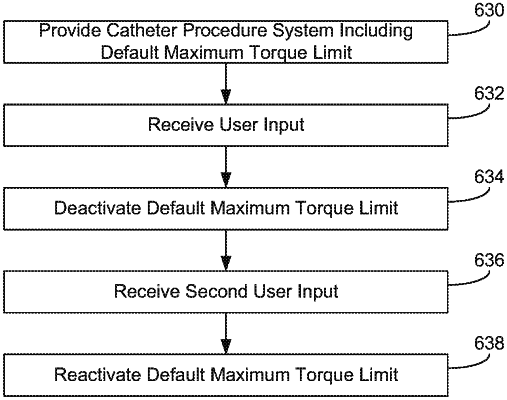| CPC A61B 34/30 (2016.02) [A61B 34/37 (2016.02); A61B 2017/0046 (2013.01); A61B 2034/301 (2016.02); A61B 2090/031 (2016.02); A61B 2090/376 (2016.02); A61M 25/0113 (2013.01)] | 19 Claims |

|
1. A robotic catheter procedure system, comprising:
a bedside system, the bedside system comprising:
a percutaneous device;
a drive mechanism configured to engage and to impart an axial force to the percutaneous device; and
an actuator providing torque to the drive mechanism to impart the axial force to the percutaneous device; and
a remote workstation, the remote workstation comprising:
a user interface configured to receive a first user input; and
a control system operatively coupled to the user interface, the control system configured to communicate a control signal to the actuator, the control signal based upon the first user input and a second input, wherein the second input comprises information related to the percutaneous device;
wherein the actuator provides torque to the drive mechanism in response to the control signal, wherein the actuator is inhibited from delivering torque exceeding a default maximum torque limit,
wherein the control system is configured to deactivate the default maximum torque limit based on the second input, wherein the actuator is permitted to deliver torque exceeding the default maximum torque limit when the default maximum torque limit is deactivated, and wherein the control system is configured to reactivate the default maximum torque limit when no user input is received for a predetermined period of time.
|